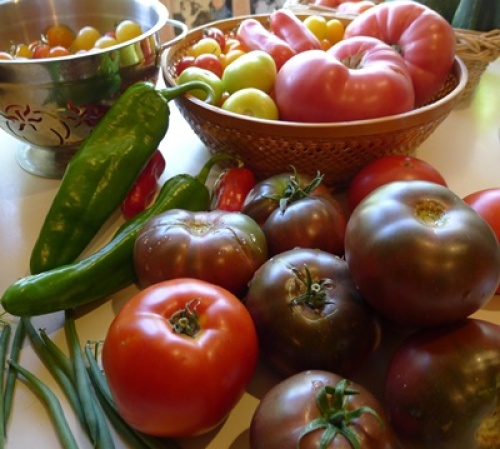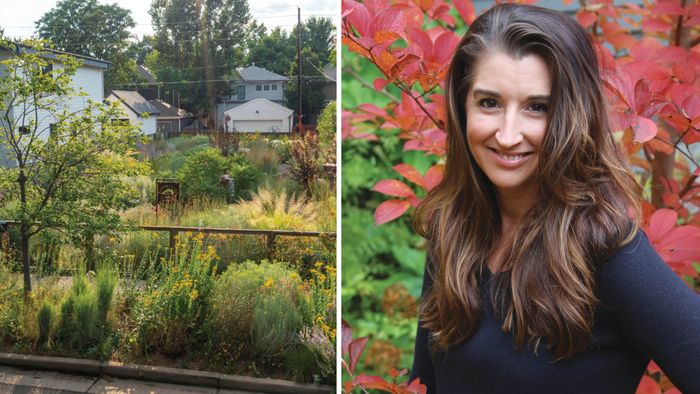
When I planted my tomato garden in early June, I wasn’t sure what kind of tomato season it would be. The winter and early spring lacked any measurable precipitation and the cool night-time temperatures delayed planting by several weeks.
It seemed like perfect timing to conduct a side-by-side trial of grafted and ungrafted tomatoes.
Harris Seeds invited me to participate in another round of home garden trials and the company sent three varieties of tomato plants to grow in my garden. There were grafted and ungrafted San Marzano, Pink Brandywine and Cherokee Purple.
Summary of Results
The San Marzano grafted tomato plant produced more tomatoes than the ungrafted plant.
The Pink Brandywine ungrafted tomato produced more than the grafted plant.
Cherokee Purple was not planted. I decided to forgo the Cherokee Purple for two reasons: this variety typically takes about two weeks longer to ripen than Black Krim and I wanted to try my Black Krim experiment instead.
- This experiment was to evaluate how a tomato cutting I’d saved from my 2012 garden would perform next to a plant started from seed in 2013. The Black Krim tomato grown from seed produced twice as many tomatoes as the plant transplanted as the cutting from last season. Other than more tomatoes, there was no difference in the mature plant size, size of tomatoes or tomato flavor.
Here’s how the season unfolded:
Right after planting the garden, the weather suddenly turned very hot–as in several days of 100-degree temperatures. This unwelcome development caught all area gardeners off guard. Those unseasonably warm days affected the tomato plants and it took a few days of cooler weather for them to recover.
There was also a week of non-stop drenching rain to contend with in September. And an early October killing freeze.
In spite of those frustrating weather challenges, the tomato growing continued.
The first ripe San Marzano tomatoes were ready to pick (on both plants) August 24. By the end of the season, the grafted tomato plant grew 28 more tomatoes than the ungrafted plant. This includes the big basket of green tomatoes that I had to hastily pick when I heard the prediction for overnight freezing temperatures. The grafted plant grew 107 tomatoes; ungrafted 79.
The first ripe Pink Brandywine tomato came from the ungrafted plant on September 1 and it was huge, weighing in at exactly 1 pound. The first grafted Brandywine was ready two days later and weighed 12 ounces. All the Brandywine tomatoes were big.
The ungrafted Pink Brandywine performed better than the grafted plant, producing 11 more tomatoes. The ungrafted plant grew 29 tomatoes; grafted 18. This was by far, the best total Brandywine crop I’ve grown.
Because of the mixed results in my small trial, I’m uncertain about the return on investment for grafted plants. It seems like it would be worth it to plant smaller, short-season tomatoes for gardeners who struggle against the elements.
What do you think?
Fine Gardening Recommended Products

Gardener's Log Book from NYBG
Fine Gardening receives a commission for items purchased through links on this site, including Amazon Associates and other affiliate advertising programs.

A.M. Leonard Deluxe Soil Knife & Leather Sheath Combo
Fine Gardening receives a commission for items purchased through links on this site, including Amazon Associates and other affiliate advertising programs.

Berry & Bird Rabbiting Spade, Trenching Shovel
Fine Gardening receives a commission for items purchased through links on this site, including Amazon Associates and other affiliate advertising programs.



















Comments
Log in or create an account to post a comment.
Sign up Log in